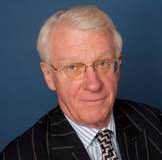Gold: Down But Not Out
The price of gold has suffered a large decline this year but things are looking up.
Gold should stabilize and a firm price be established as we head into 2014, given the accommodative and what we believe are even extreme monetary policies seen across the major economies in the world — namely Japan, Europe, and the United States.
In the U.S., Janet Yellen's nomination as the next head of the Federal Reserve could extend the current near-zero short-term interest rate environment for some time. The demand for physical gold also continues to rise. Close to 50% of global gold demand emanates from India, which is the largest jewelry market in the world, as well as China, which is the fastest-growing jewelry market. Both countries have a large and growing middle class and total gold demand through jewelry purchases should continue to outpace, at four to five times the volume, that of the U.S.
Also remember that gold's price is closely tied to investor sentiment. The current run-up of the equity market has turned investors' attention to stocks and away from commodities. When commodity prices are advancing as a result of inflation or increased demand, investors often gravitate to gold and we expect that to be the case as a result of accommodative monetary policies.
That said, the Tocqueville Gold Fund invests in shares of miners rather than directly in gold.
Traditionally, miners trade at 1.5 to 2 two times that of the underlying commodity; although, at times, the price relationship between gold and the miners can decouple and one may move in the opposite direction from the other. This price movement relationship between the two has been relatively consistent since gold's peak in 2011.
While gold has declined primarily due to downcast investor sentiment and a robust equity market, the price of miners has fallen for different reasons. The industry is undergoing various structural and operating changes. Miners are attempting to become more efficient, driving down the cost to extract an ounce of gold.
Previously, with gold at much higher price levels, new mine development and acquisitions became the focus. Cost control was often a secondary objective. Today, the reverse has occurred — a very positive development. Miners are looking to reduce the cost of production and maintain an attractive margin in a much lower price environment for gold. This retrenchment will take time to yield results, but it is a healthy phase that will allow well-managed companies to add shareholder value through better capital allocation.
With many miners experiencing operating challenges, industry consolidation is a possibility and we are already starting to see firms rethink how they operate. Some may consider the merger route while others may look at joint venture opportunities with companies that have a stronger capital structure. While each company has its own break-even metric, in general, the threshold for profitability can be pegged to a price of gold of approximately $1,200-$1,250 per ounce.
Using that guideline, we believe that about 20% of miners are unprofitable. These less efficient companies need to drive their operating costs down further, participate in joint ventures, or seek consolidation alternatives.
Within the Tocqueville Gold Fund's portfolio, we seek to own miners with very capable managements, strong balance sheets and operating costs at the low end of the spectrum. In fact, we're seeing quite a few opportunities surface which we believe offer compelling potential for value creation.
John Hathaway and Doug Groh, the co-portfolio managers of the Tocqueville Gold Fund.
********
Tocqueville Funds
40 West 57th Street 19th Floor ● New York ● NY ● 10019-4001
Tel: (212)698-0800 ● Fax: (212)262-0154 ● http://www.tocqueville.com







 John Hathaway, CFA, Senior Managing Director, Co-Portfolio Manager
John Hathaway, CFA, Senior Managing Director, Co-Portfolio Manager










